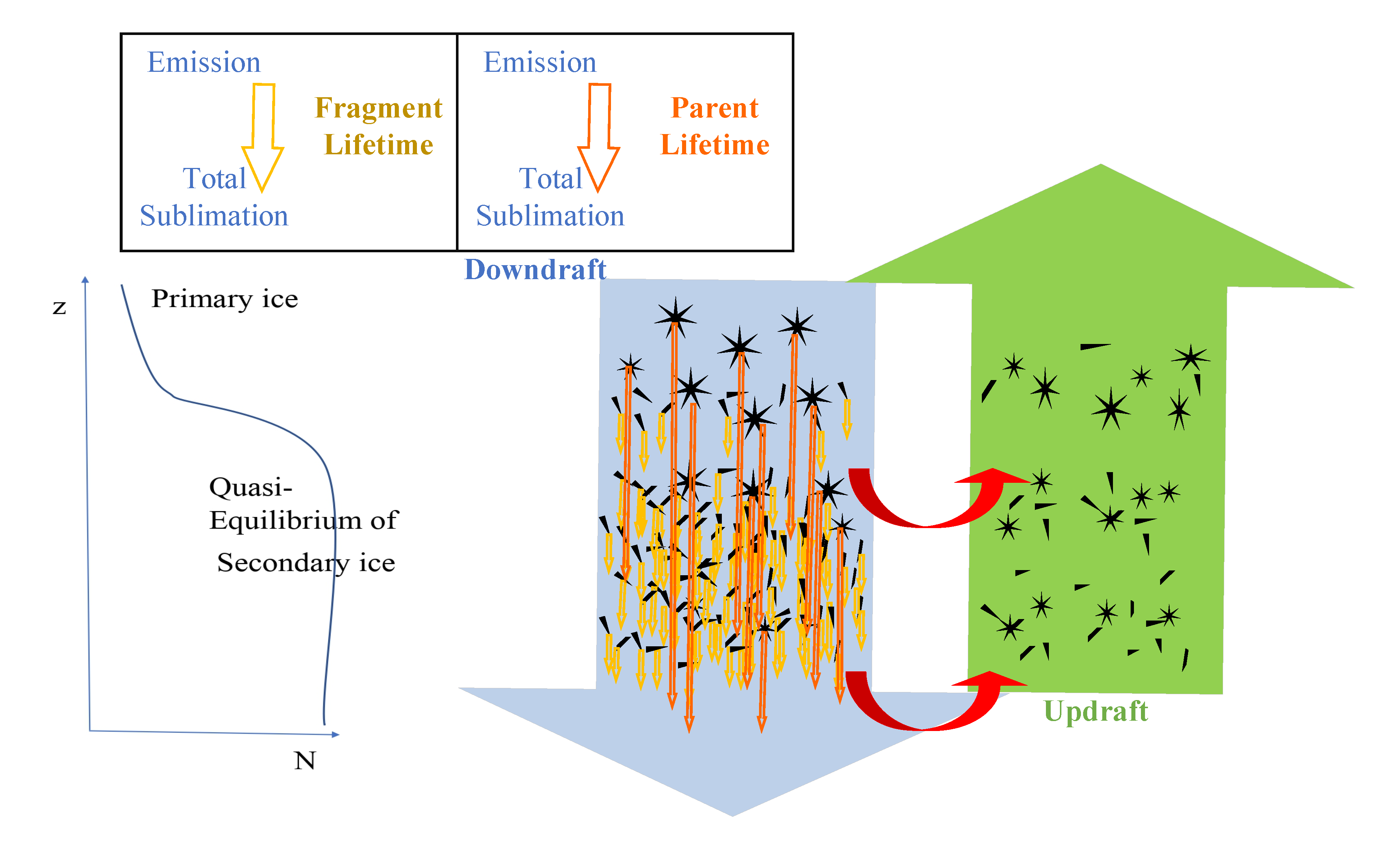New formulation for sublimational breakup of ice particles
Submitter
Phillips, Vaughan — Lund University
Area of Research
Cloud Processes
Journal Reference
Deshmukh A, V Phillips, A Bansemer, S Patade, and D Waman. 2022. "New Empirical Formulation for the Sublimational Breakup of Graupel and Dendritic Snow." Journal of the Atmospheric Sciences, 79(1), 10.1175/JAS-D-20-0275.1.
Science

Figure 2. Schematic visualization of the dynamical quasi-equilibrium of continual emission and continual depletion of ice fragments in convective descent. The depth of the convective downdraft can be up to a few kilometers. From journal.

Figure 1. The phase-space of the rate of emission of fragments (dN/dt) as a function of initial size (‘diam’) dendritic snow crystals and 100% minus the relative humidity with respect to ice (RHi). From journal.
Aircraft observations of deep cold clouds have always shown ice particles to be far more numerous than the first crystals from solid aerosols, implicating several types of fragmentation aloft. The problem of scarcity of published lab observations of sublimational breakup of ice, one such type, can be overcome by pooling all available data and fitting it with a theoretically derived formulation. In that way, this study creates a formulation for cloud models to treat the breakup of dendritic snow and graupel in ice-subsaturated conditions. Potential effects on ice concentrations in cloud are estimated.
Impact
A formulation for atmospheric models has been innovated to represent the numbers of ice fragments from sublimation of ice particles. Significant ice enhancement in convective descent can occur.
Summary
To create the formulation, the concept of a “sublimated mass activity spectrum” for the breakup is applied to the amalgamated data set of past published studies. The number of ice fragments is determined by the relative humidity over ice and the initial size of the parent ice particles, for dendritic snow and graupel. Finally, idealised simulations and scaling analysis estimate the potential extent of ice enhancement in a deep convective downdraft. Continual emission and depletion by sublimation yields a quasi-equilibrium concentration of the fragments, which exceeds the initial parent concentration by a factor of up to about 5-10.
Keep up with the Atmospheric Observer
Updates on ARM news, events, and opportunities delivered to your inbox
ARM User Profile
ARM welcomes users from all institutions and nations. A free ARM user account is needed to access ARM data.


















